
 Some conditions - such as obesity, depression and functional odor disorders - come with a social stigma. Understanding the etiology of these conditions helps to avoid stereotypes and find remedies.
0 Comments
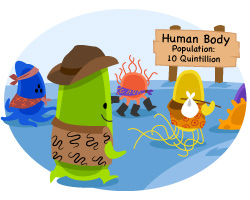
Science explains why some people smell worse than others despite keeping themselves squeaky clean.
The body is crawling with microbes that have evolved with the person, depending on the innate metabolism, history of infections, microbiome swaps, diet and lifestyle. The body's ecosystem of microorganisms can increase the risk for dangerous diseases for which we have unreserved levels of sympathy. It can also lead to unlikable conditions such as unpredictable and embarrassing outbursts of odor emitting through the pores - odor so bad it ruins social lives and careers. 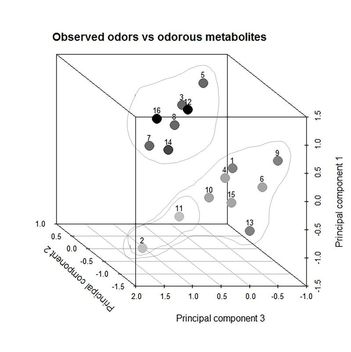
There is no cure for conditions responsible for odorous microbiomes. A rare disease TMAU (Trimethylaminuria) - an inborn error of choline metabolism that leads to the excessive excretion of foul-smelling trimethylamine (TMA) in the sweat and breath - can sometimes be managed by unhealthy diet very low in choline. A purely-microbiome-caused case of armpit odor may be fixed by microbial transplantation. But research is still in its early stages and is mostly unfunded.
Our community-led clinical trial was the first study attempting to find what is in common among individuals suffering from odor unexplained by known medical conditions such as TMAU. We have demonstrated that symptoms described by participants are real - as they correlate with a number of laboratory tests. We have also proposed that there are at least two groups of participants with different genetics/medical histories (hence different microbiomes) that may require different types of treatments. Unfortunately publishing these results is very difficult - with no funding to cover publication fees and no "sex appeal" to get support from peers. (The article was submitted to the Journal of Participatory Medicine in February, but peer-reviewers still have not returned their reviews) The preprint is now available at bioRxiv and raw results at Mendeley. Study results will be also available on the clinical trials site. We hope that the scientific community will look into our findings and support the underserved by their attention. Any comments or suggestions would be of great help!
REFERENCE
Irene S. Gabashvili (2017). Community-led research discovers links between elusive symptoms and clinical tests BiorXiv DOI: 10.1101/139014
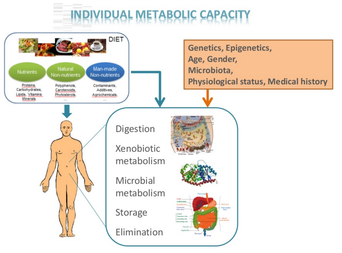
Analysis of our metabolism is crucial to comprehending the responses of our genes and microbes to the stresses of daily life, and to elucidating the causes and consequences of health and disease.
And measurement of urinary metabolites - small molecules produced from foods, drinks, drugs, environmental contaminants, bodily waste products and bacterial by-products - is key to the analysis. We applied this approach to an elusive condition that has always evaded diagnosis: socially and psychologically distressing odors that occur without a known or apparent cause. The figure below summarizes preliminary results of metabolic profiling performed by Dr. Wishart's research group, using direct Flow Injection Mass Spectrometry (DI-MS). 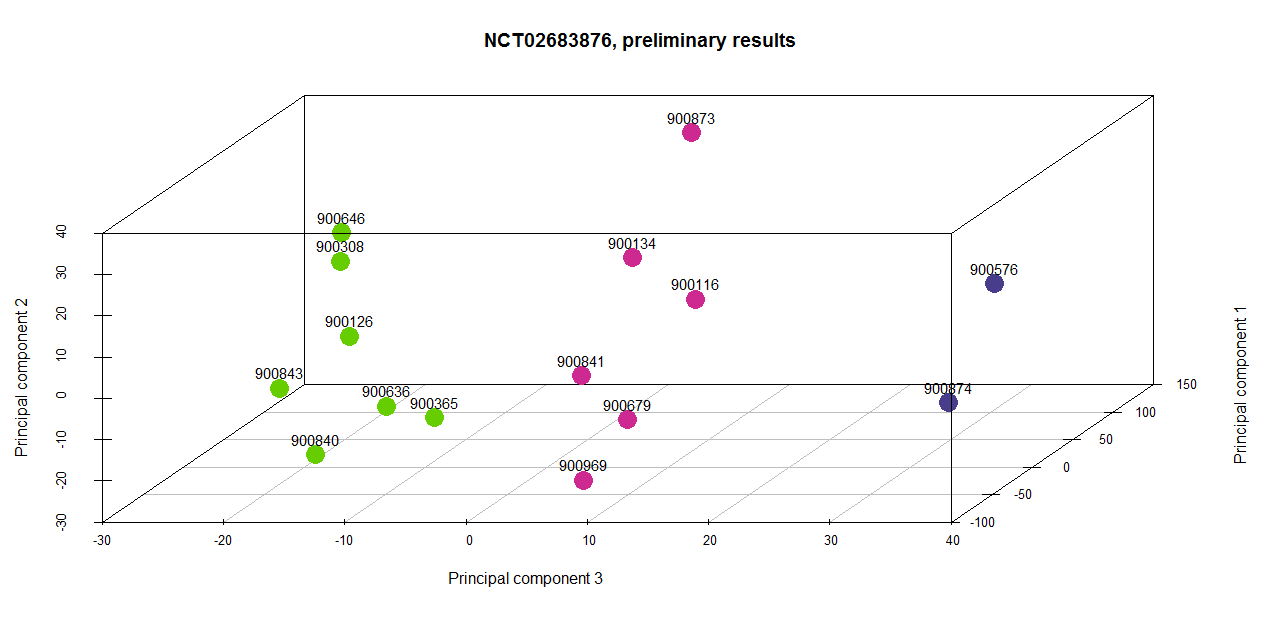
The first part of our study explored 95 metabolites: biogenic amines (odorous by-products of microbes predicting certain health conditions), amino acids (for diagnostics of endocrine disorders, liver diseases, muscle diseases, neoplastic diseases, neurological disorders, nutritional disturbances, renal failure, and burns), acylcarnitines (biomarkers of fatty acid oxidation disorders and several organic acidurias), phospholipids and sphingolipids (useful in evaluating some enzyme deficiencies) in samples of 15 participants.
No measurement differed from normal population values - individuals that never complained of any unusual odor problems or other notable medical issues) - even for the "smelliest" compounds such as Putrescine (rotting fish smell) or Spermidine (sperm-like or bleach-like smell). Moreover, average values for these metabolites were actually lower in our cohort, as were values for selected aminoacids, although some aminoacids, biogenic amines and lipids were slightly higher than averages for normal population. So there were definitely significant albeit subtle differences in metabolism between the control and test group, as well as among the participants. We combined results for all 95 metabolites using a uniform standard scale. A statistical technique, Principal Component Analysis (PCA), uncovered combinations that best differentiated the participants. The figure shows that there are at least two or three different types of profiles. Is there something in common between participants in each group? Our questionnaire shows that there is, and it is not the diet! 
The most significant differences between participants clustered into the groups shown in the figure are their environmental sensitivities (hence their metabolism) and their symptoms.
Participants from the first group (green dots) had very different diets ranging from plant-based, low choline, low carb and Paleo diets to standard American and junk food diets. They seemed to be more tolerant to sugar than other groups, but more sensitive to dairy/lactose. All participants reported exhibiting sour odors including vinegar, ammonia, fishy and urine-like odors. When the usual odor was less sour (but nonetheless unpleasant), it became more sour with lower blood sugar (for example, with alpha lipoic acid supplements). Chlorophyll supplements led to a grass- or weed-like smell. This group was similar to the "sour" group from our earlier study in UK (NCT02692495, discussed in this video). The second group (purple dots) was similar to the "sweet" group from the earlier UK study. Participants seemed to be more sensitive to sugar and carbohydrates, and to environmental triggers. Main odors experienced ranged from fecal, sewage, cheese-like, rubber, burning, tobacco smoke (participants were non-smoking), barn, rotten eggs and mold. Dairy could make odors "cheesier". The third group was also sensitive to sugar, but the main difference with first and second groups was structural gastrointestinal issues. This group had a different diet from other groups too, it was 98-100% vegan. But further testing is needed before any conclusions can be drawn. We observed a few other interesting patterns but will wait before commenting on them until more data is collected. Meanwhile, if you have never experienced any unpleasant odors in your life, or experienced some that did not affect your social life, you can contribute to our analysis of the human metabolism by participating in this anonymous survey. References
Irene S. Gabashvili (2017) Community-led research discovers links between elusive symptoms and clinical tests. Submitted
Bouatra, S., Aziat, F., Mandal, R., Guo, A., Wilson, M., Knox, C., Bjorndahl, T., Krishnamurthy, R., Saleem, F., Liu, P., Dame, Z., Poelzer, J., Huynh, J., Yallou, F., Psychogios, N., Dong, E., Bogumil, R., Roehring, C., & Wishart, D. (2013). The Human Urine Metabolome PLoS ONE, 8 (9) DOI: 10.1371/journal.pone.0073076
Irene S. Gabashvili (2017). Raw Data from Clinical Trial NCT02692495 Mendeley Data, 1 DOI: 10.17632/8bk6h6bmkr.1
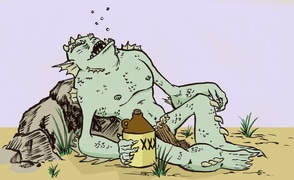
Nobody likes strong smells coming from other human beings. It's just that social convention: you are nice, if you smell nice, and you are a monster - like Shakespeare's Caliban - if you smell bad.
Caliban, often depicted as a Golumn-like creature, is one of the first cases of fish odor syndrome described in the literature. No amount of soap and water would help him to wash the smell away, as his body is constantly producing a pungent small molecule trimethylamine. Caliban is likely to bore a brunt of a genetic misfortune - an error in the gene coding for Flavin containing monooxygenase 3, aka FMO3. However, as the recent article published by Dr. Preti's team shows, it could be also caused by mutations in a number of other genes in FMO3 pathway. Even worse, as observed by Dr. Callewaert, some body odor conditions could be more like "infections" - e.g., picked up by sleeping in a dirty bed or using a contaminated washing machine. Humans are awash in microbes; they cover our skin, live in our nose and mouths. Very little dis-balance could affect the symbioses and create colonies of displeased microbes generating smell. Sometimes it is not even describable as smell - as in PATM - "people alelrgic to me" condition that causes those surrounding the sufferer to exhibit a range of sensitivity reactions - from sneezing and coughing to rubbing their eyes. These conditions are difficult to study. But we should study them, as we need to give the underserved the care they deserve. Join our Livestream today at 10 am PST to learn more.
REFERENCES
Guo Y, Hwang LD, Li J, Eades J, Yu CW, Mansfield C, Burdick-Will A, Chang X, Chen Y, Duke FF, Zhang J, Fakharzadeh S, Fennessey P, Keating BJ, Jiang H, Hakonarson H, Reed DR, & Preti G (2017). Genetic analysis of impaired trimethylamine metabolism using whole exome sequencing. BMC medical genetics, 18 (1) PMID: 28196478
Callewaert C, Lambert J, & Van de Wiele T (2016). Towards a bacterial treatment for armpit malodour. Experimental dermatology PMID: 27892611
Kubota, H., Mitani, A., Niwano, Y., Takeuchi, K., Tanaka, A., Yamaguchi, N., Kawamura, Y. and Hitomia, J. (2012) Moraxella species are primarily responsible for generating malodor in laundry. Appl Environ Microbiol 78, 3317–3324. Takeuchi, K., Hasegawa, Y., Ishida, H. and Kashiwagi, M. (2012) Identification of novel malodor compounds in laundry. Flavour Fragr J 27, 89–94. Bockmühl DP. Laundry hygiene–how to get more than clean. Journal of Applied Microbiology. 2017 Jan 1. DOI: 10.1111/jam.13402  Human skin emits light (albeit the glow is extremely weak) and a wide variety of small molecules that may be sometimes "sniffed" by dogs or even other humans. These chemicals tell a story about our health and wellness, things we eat and drink, touch and breathe. Mosquitoes use such emissions to assess our "attractiveness" from indicators such as Indoles (unpleasantly smelling but healthy "inner soil" biomarker) or carbon dioxide (amount of which correlates with the size of the person producing it) in the air.  Sampling air for health indicators is much less invasive than drawing blood and could be an invaluable diagnostic tool. Many applications of gas sensors have been proposed over decades ranging from sweat patches to sensorized garments. Where are we now? What is the 2016 state of the art? |
Categories
All
Environment
|
 RSS Feed
RSS Feed
